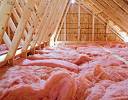The Fall Season is approaching many of us. For me it’s is noticeably below 90 degree’s. If you are in the northern climates this is your opportunity to “batten down the hatches” by tightening up the house. Re-caulking, sealing, and roof inspections are in order. Checking door and window seals are also in order. For the rest of us, the lower temperatures are a relief, summer is mostly over and we can attack those projects we wouldnt touch during the summer.
Heating/Cooling-Air Filters:If you live in a dusty area and/or have been using your air conditioner a lot, inspect you filter and change it if it has noticeable build up from your spring change out. 
- HVAC Outdoor Unit: We did this in the summer and it’s good to do it again as vegetation has been growing through the spring months. Get your garden trimmers out and trim away any vines or growth away from the outside condenser. You should have 18″ to 2 feet of clearance around the unit. Take your water hose and wash down the outside coils.
- Exterior Inspection: Walk round the house, look for bird and wasp nests, as well as locations that rodents might be using to get in the house. Remove the nests and use caulk to re-seal any breaches in structure that may be an entry point for rodents or bugs.
- Roofing-Looking For Leaks: Winters are a bad time to look for roof leaks so inspect your roof for leaks, trim away any tree limbs and clean debris off the roof. Look for raised nails and any breaches in the roof surface.
- Sealing the Leaks: Summertime weather can cause the home exterior to dry out. Look for cracks and voids in building materials. Seal them with a good latex caulk. Larger voids should be filled (first) with a foam spray caulk, then to make it dressed for paint, use the latex caulk to finish it off and paint as necessary.
- Interior Inspection: Flush kitchen and bathroom sinks with scalding hot water for approximately 3-5 minutes to clear out any build up.
- Surface Water Drainage: Culverts, waterways and landscape drainage systems should be cleared of debris and overgrowth that has occurred.
- Electrical Service-Smoke Detectors: Clean your smoke detectors of cob webs and check the condition of the battery.
- Chimney Flue Inspections and Cleaning: For our northern friends this is the time to ensure your stoves and fireplaces are prepared for the winter use. Inspect the stove seals, clean the chimneys and flues.
- Drain and cut-off sprinklers: If you are in the northern climates, its time to turn off these services to protect them through the winter. In the south, southwest and western part of the US, we can wait a few more months.
If you are needing some additional information on one of the topics that I have not written about, let me know and I will put it higher on the list of articles to write. Email to HomeownerBOB@gmail.com




 Posted by homeownerbob
Posted by homeownerbob 
